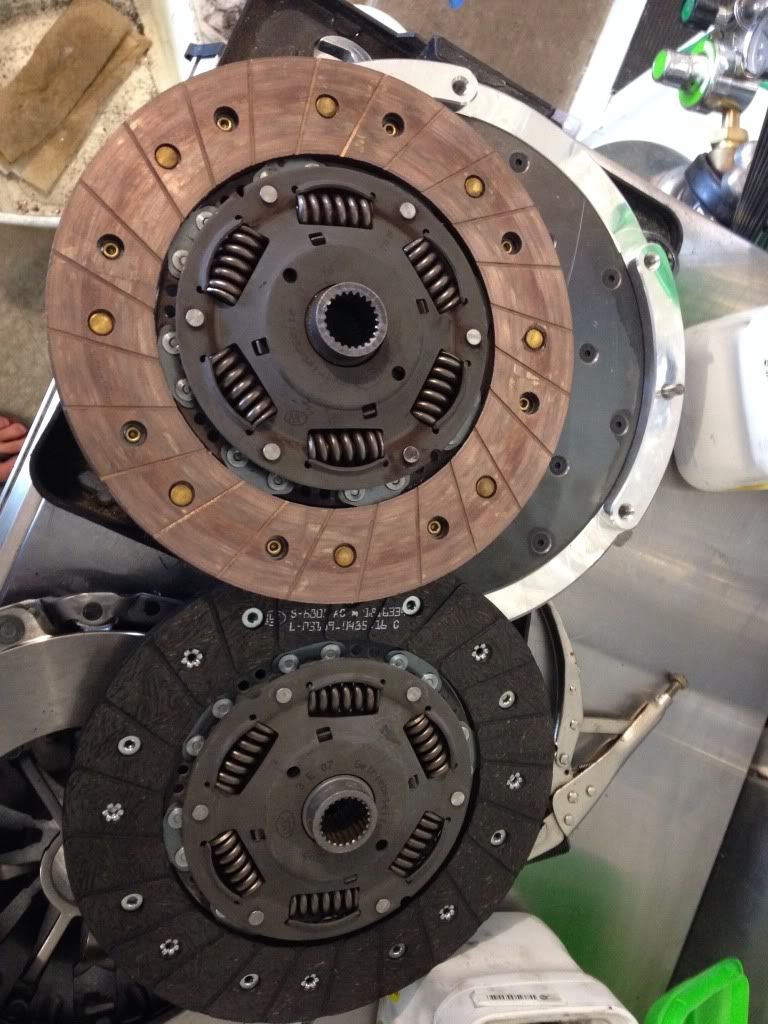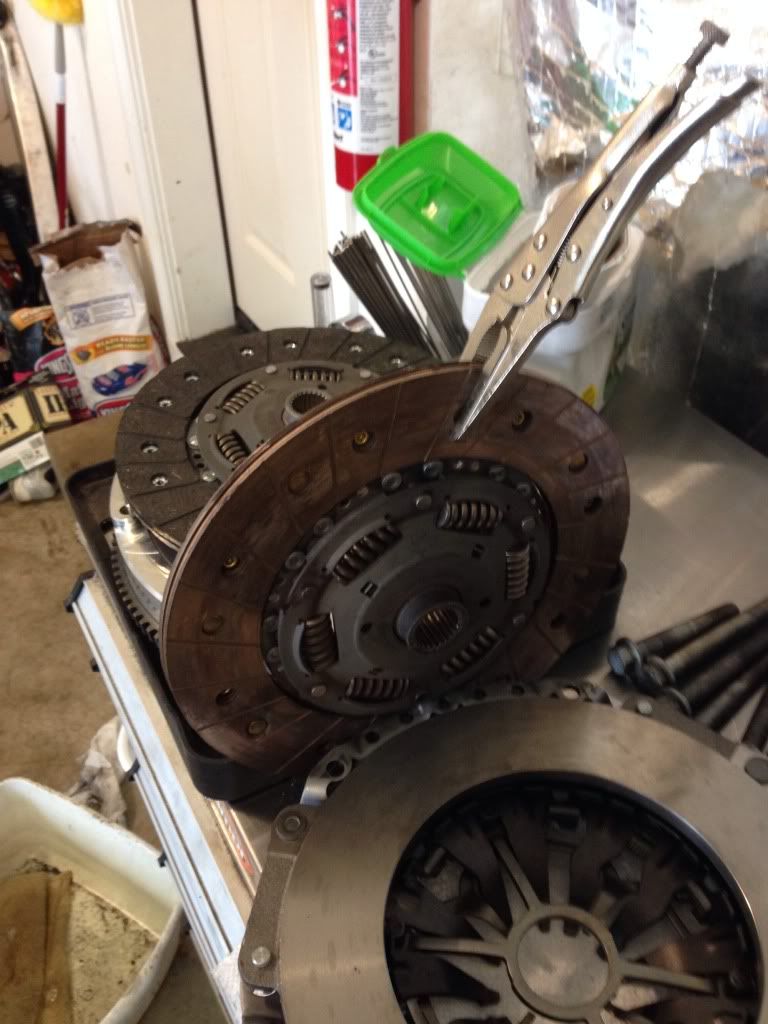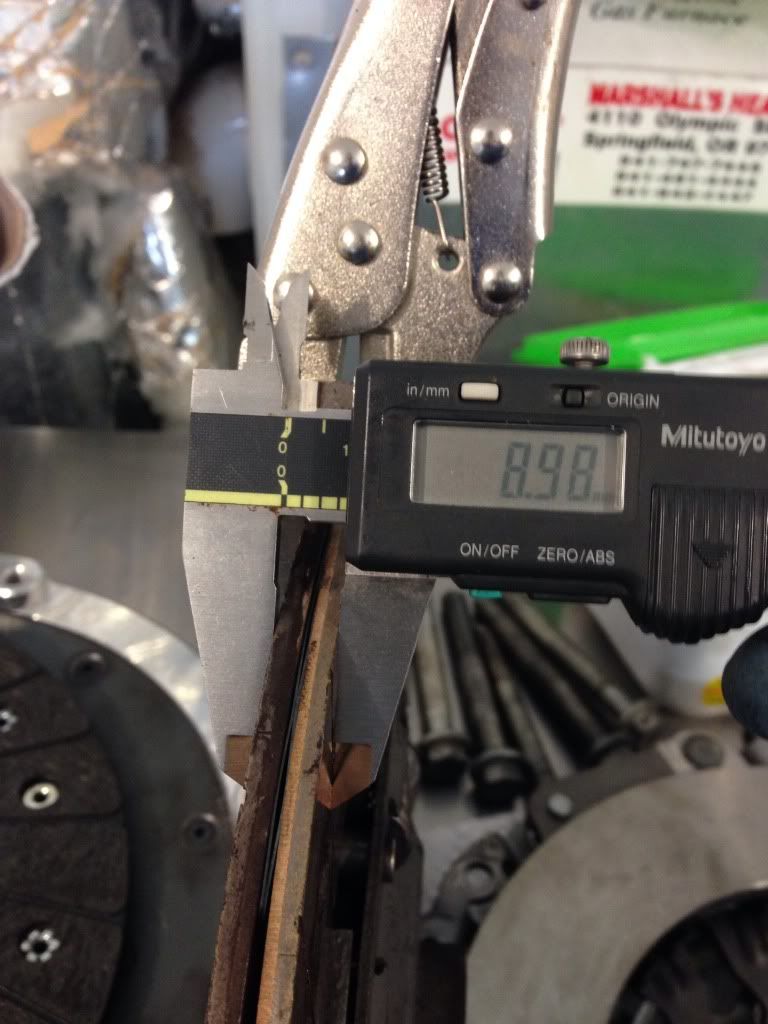chatter isnt really all about the flywheel, chatter is about clamping force, and disc surface area. A lighter flywheel can be a big contributing factor, especially when the car in question is 3700LBS and AWD.
But applying more force, over a faster moving smaller surface area is your ticket to chatter.
A pucked clutch disc vs a Full face disc is a way that clutch companies can keep materials cost down and also have a weaker pressure plate that is able to apply the same grabbing force or clapming pressure as a Full face clutch with a Heavier sprung Pressure plate.

essentially acheiving the same Clamping PSI as a full faced disc.

the problem is that there is also now less area to ABSORB the "impact" or reaction between the Pressure plate and Flywheel. Now if the flywheel has a greater Delta V (change in velocity) Or Inertia of the Flywheel.
aluminum will Rise the RPMs faster, but alternatively drop the revs faster. afterall flywheels are heavy for a reason, and technically its about conservation of energy.
a heavier flywheel will take more power to get going, but sustain that RPM for longer. this is good for highway driving, long stretches ect.
a lighter flywheel takes less energy to spin, so if you are constantly shifting or moving through the rpm range this can be good.
a drag car can benefit from a lighter flywheel, while road race car or daily driver may want a compromise between a super light flywheel and heavier alternative.
the dual mass flywheel is a sprung steel flywheel with two pieces (IE DUAL mass) when the clutch is engaged the sprung surface absorbs the initial shock of the engagement for a smoother shift.
Unfortunately the more moving pieces means the more to fail, this isnt always true but I have seen many people disapointed that their DMFW had excessive play upon removal.
Single mass flywheels are great because of their simplicity. less moving parts means less to fail.
Also Im not an expert and I may have some terms backwards, but I think you guys get the general idea.













 Reply With Quote
Reply With Quote







 I hope I get a lot more than 10k out of mine.
I hope I get a lot more than 10k out of mine.








Bookmarks